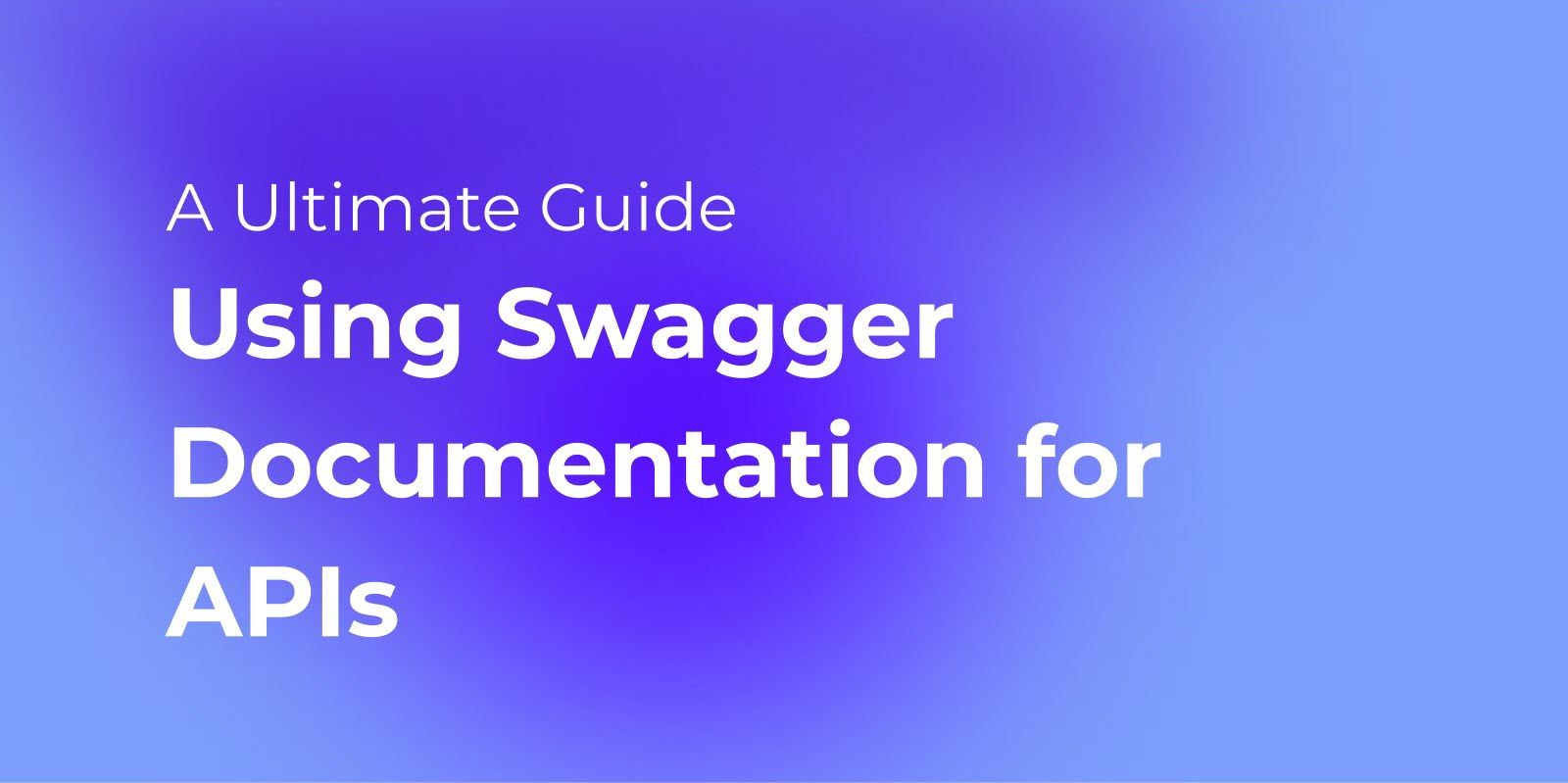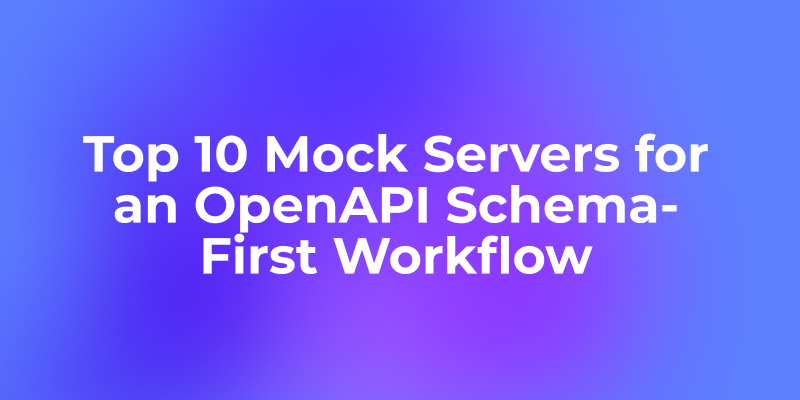OpenAPI is a specification for building and documenting APIs. It provides a standard way to describe RESTful APIs, making it easier for developers to understand and consume them. By defining endpoints, request/response formats, parameters, and more, OpenAPI simplifies API development and enhances interoperability between systems.
Compared to manually writing API documents, choosing a tool to generate OpenAPI documentation is an effective and efficient way for many developers. These tools streamline the process of creating, updating, and maintaining API documentation, saving time and reducing the likelihood of errors.
Today, we will introduce the top 10 OpenAPI documentation tools in the market, providing insights into their features, usability, pros and limitation. Whether you prioritize user experience, customization options, or collaboration features, there's a tool on this list that's perfect for your needs.
Why Use an API Documentation Tool?
When you master the standard for defining RESTful APIs, you may need an OpenAPI documentation tool to manage and maintain your APIs. Using an OpenAPI tool offers several key benefits:
- Standardization: OpenAPI provides a standardized way to define and describe RESTful APIs, making it easier for developers to understand and work with the API.
- Automated Documentation Generation: OpenAPI allows you to automatically generate documentation for your API. This documentation can be hosted and shared with developers who will be consuming your API.
- API Testing and Validation: OpenAPI documents can be used to automatically validate API requests and responses, ensuring that the API is functioning as expected and adhering to the defined specifications.
- Code Generation: Many tools can generate client libraries or server stubs in various programming languages based on the OpenAPI specification, saving developers time and effort in integrating with the API.
- Collaboration and Consistency: OpenAPI specifications serve as a central source of truth for the API, allowing teams to collaborate more effectively and maintain consistency across different parts of the API development and consumption process.
Top 10 OpenAPI Documentation Tools List
Next, we will go through the 10 best OpenAPI documentation tools, including their usage, advantages, and disadvantages. By exploring these options, you can select the best tool for your project and team, ensuring smooth API development and seamless integration with your applications. Hope this post helps you to find the best OpenAPI documentation generator that meets your needs.
Apidog
Apidog is a versatile OpenAPI documentation tool designed to streamline the process of documenting APIs. It offers a user-friendly interface with customizable themes and layouts, allowing developers to create comprehensive API documentation effortlessly.
Apidog supports various programming languages and frameworks, making it adaptable to diverse development environments. Its robust features include interactive API testing, code sample generation, and real-time collaboration, enhancing productivity and facilitating effective communication among team members.

Pros:
- User-friendly interface with customizable themes and layouts.
- Supports multiple programming languages and frameworks.
- Interactive API testing and code samples generation.
- Real-time collaboration features foster team productivity.
Cons:
- Limited advanced customization options compared to some other tools.
- Some users may find the initial learning curve slightly steep.
Swagger UI
Swagger UI is renowned OpenAPI documentation tools trusted by developers worldwide. Swagger UI provides a clean and intuitive interface for visualizing and interacting with API documentation.

On the other hand, SwaggerHub offers a centralized platform for designing, documenting, and managing APIs collaboratively. Both tools support OpenAPI Specification, enabling seamless integration with existing APIs and services. With features like code generation, API mocking, and version control, Swagger UI empower teams to accelerate API development and ensure consistency across projects.
Pros:
- Clean and intuitive interface for visualizing and interacting with API documentation.
- Support for OpenAPI Specification ensures compatibility with existing APIs.
- Features like code generation, API mocking, and version control enhance productivity.
- SwaggerHub provides a centralized platform for collaborative API design and management.
Cons:
- Advanced features may require a paid subscription.
- Steeper learning curve for beginners compared to some other tools.
Postman
Postman is a comprehensive API development platform that includes robust documentation capabilities. Beyond its primary function as an API client, Postman offers features for creating, testing, and documenting APIs. Its documentation feature allows users to generate and publish comprehensive API documentation effortlessly.

Postman supports both OpenAPI Specification and RAML, enabling seamless integration with existing API specifications. With features like automatic documentation generation, interactive examples, and team collaboration tools, Postman simplifies the process of creating and maintaining API documentation, enhancing developer productivity and facilitating effective communication within development teams.
Pros:
- Comprehensive API development platform with documentation capabilities.
- Supports both OpenAPI Specification and RAML for seamless integration.
- Automatic documentation generation streamlines the documentation process.
- Interactive examples and team collaboration tools improve productivity.
Cons:
- Advanced features may require a paid subscription, like limited collection runners.
- The steeper learning curve for beginners compared to some other tools.
Apiary
Apiary is a popular API documentation tool trusted by developers for its simplicity and efficiency. It offers a collaborative platform for designing, documenting, and testing APIs, enabling teams to streamline the API development lifecycle.

Apiary's documentation feature allows users to create interactive API documentation from API Blueprint, Swagger, or RAML files. Its intuitive editor and customizable themes make it easy to create visually appealing documentation that meets specific project requirements. With features like API mocking, automated testing, and version control integration, Apiary empowers teams to iterate quickly and deliver high-quality APIs.
Pros:
- Collaborative platform for designing, documenting, and testing APIs.
- Supports multiple API specification formats, including API Blueprint, Swagger, and RAML.
- Intuitive editor and customizable themes for creating visually appealing documentation.
- Features like API mocking, automated testing, and version control integration enhance productivity.
Cons:
- Some advanced features may require a paid subscription.
- Limited flexibility in customization compared to some other tools.
ReDoc
ReDoc is a powerful OpenAPI documentation tool known for its simplicity and elegance. It focuses on generating beautiful and responsive API documentation with minimal configuration. ReDoc automatically generates interactive API documentation from OpenAPI Specification files, providing developers with a seamless experience for exploring and testing APIs. Its customizable themes and layout options allow users to tailor the documentation to their specific needs, while its support for Markdown enables easy integration of additional content. ReDoc is an excellent choice for teams looking to quickly create visually appealing API documentation with minimal setup.
Pros:
- Simple and elegant interface with minimal configuration required.
- Automatically generates interactive API documentation from OpenAPI Specification files.
- Customizable themes and layout options enhance flexibility.
- Support for Markdown allows easy integration of additional content.
Cons:
- Limited advanced customization compared to some other tools.
- May lack certain advanced features required for complex API documentation projects.
DapperDox
DapperDox is a feature-rich OpenAPI documentation tool designed to streamline the process of creating comprehensive API documentation. It offers a wide range of customization options, allowing developers to tailor the documentation to their specific requirements. DapperDox supports multiple output formats, including HTML, Markdown, and PDF, providing flexibility in how the documentation is presented and shared. With features such as interactive API testing, code samples generation, and version control integration, DapperDox empowers teams to collaborate effectively and accelerate the API development process.
Pros:
- Feature-rich tool with extensive customization options.
- Supports multiple output formats, including HTML, Markdown, and PDF.
- Interactive API testing and code samples generation enhance productivity.
- Integration with version control systems facilitates collaborative development.
Cons:
- Steeper learning curve compared to some other tools due to its extensive feature set.
- Advanced customization may require familiarity with the tool's configuration options.
Theneo
Theneo is a versatile OpenAPI documentation tool designed to simplify the process of creating and managing API documentation. It offers a user-friendly interface with intuitive controls, making it accessible to developers of all skill levels. Theneo supports real-time collaboration, allowing team members to work together seamlessly on documenting APIs. With features such as automatic endpoint detection, interactive API testing, and customizable templates, Theneo streamlines the documentation process and improves overall productivity.
Pros:
- User-friendly interface with intuitive controls.
- Supports real-time collaboration for team members.
- Automatic endpoint detection simplifies the documentation process.
- Customizable templates enhance flexibility in documentation design.
Cons:
- Limited advanced customization options compared to some other tools.
- May lack certain advanced features required for complex API documentation projects.
Hoppsoctch
Hoppsoctch is a modern API development tool designed to simplify the process of testing and debugging APIs. It provides a user-friendly interface for sending HTTP requests and inspecting responses, making it an ideal choice for developers who need to interact with APIs frequently.
Hoppsoctch supports various authentication methods and allows users to save and organize requests for future use. With features like environment variables, response mocking, and scripting support, Hoppsoctch enhances developer productivity and facilitates efficient API testing and debugging workflows.
Pros:
- User-friendly interface for sending HTTP requests and inspecting responses.
- Supports various authentication methods for secure API testing.
- Allows users to save and organize requests for future use.
- Features like environment variables and response mocking enhance productivity.
Cons:
- Limited advanced features compared to some other API development tools.
- May lack certain integrations with API documentation platforms.
ReadMe
ReadMe is a comprehensive API documentation platform designed to help companies create and maintain developer-friendly API documentation. It offers a range of features for documenting APIs, including interactive API reference guides, code samples, and SDK generation.
ReadMe's intuitive editor allows users to create and customize documentation easily, while its built-in versioning and collaboration tools facilitate teamwork and ensure documentation consistency. With features like API analytics, developer portals, and API Explorer, ReadMe empowers organizations to provide a seamless developer experience and foster community engagement around their APIs.
Pros:
- Comprehensive API documentation platform with interactive reference guides and code samples.
- Intuitive editor for easy documentation creation and customization.
- Built-in versioning and collaboration tools enhance teamwork and consistency.
- Features like API analytics and developer portals improve developer experience.
Cons:
- Some advanced features may require a paid subscription.
- Steeper learning curve for beginners compared to simpler documentation tools.
Stoplight
Stoplight is a versatile API design and documentation platform that helps teams streamline the entire API lifecycle. It offers features for designing, documenting, mocking, and testing APIs, making it a one-stop solution for API development needs. Stoplight's visual editor allows users to design APIs collaboratively using OpenAPI Specification or JSON Schema.

Its documentation feature enables users to generate interactive API documentation with ease, complete with code examples and API Explorer. With features like API mocking, automated testing, and version control integration, Stoplight empowers teams to iterate quickly and deliver high-quality APIs that meet business requirements.
Pros:
- Versatile platform for API design, documentation, mocking, and testing.
- Visual editor for collaborative API design using OpenAPI Specification or JSON Schema.
- Generates interactive API documentation with code examples and API Explorer.
- Features like API mocking, automated testing, and version control integration enhance productivity.
Cons:
- Some advanced features may require a paid subscription.
- Steeper learning curve for beginners compared to simpler documentation tools.
FAQs of OpenAPI Documentation Generators
What is the Relation between OpenAPI and Swagger?
The relationship between OpenAPI and Swagger is that Swagger is the original name of the API specification that eventually evolved into the OpenAPI Specification (OAS).
Swagger was initially developed by Tony Tam at Wordnik and later donated to the OpenAPI Initiative under the Linux Foundation. The Swagger specification formed the basis for the OpenAPI Specification, which is now the industry standard for defining RESTful APIs.
Is Swagger a documentation tool?
Yes, Swagger is both an API documentation tool and a framework for designing, building, and documenting APIs.
Swagger is more than just a documentation tool; it's a comprehensive framework for API development and documentation. While its primary function is to generate interactive and user-friendly API documentation from OpenAPI Specification files, Swagger also offers a range of features to aid in API design, testing, and implementation.





